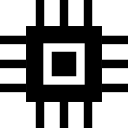Computer organization: Difference between revisions
Mr. MacKenty (talk | contribs) |
Mr. MacKenty (talk | contribs) No edit summary |
||
| Line 10: | Line 10: | ||
</html> | </html> | ||
=== Computer architecture === | === Computer architecture === | ||
| Line 35: | Line 31: | ||
* [[Application software]] | * [[Application software]] | ||
* [[Common features of applications]] | * [[Common features of applications]] | ||
=== Binary Representation === | |||
* [[Binary]] | |||
* [[ASCII]] | |||
* [[Bit, byte, binary, denary/decimal, hexadecimal]] | |||
* [[Data representation]] | |||
=== Simple logic gates === | === Simple logic gates === | ||
| Line 42: | Line 45: | ||
* [[Truth tables]] | * [[Truth tables]] | ||
* [[Logic diagram]] | * [[Logic diagram]] | ||
== Textbook pages == | == Textbook pages == | ||
* | * Please wait until our textbook arrives | ||
== References == | == References == | ||
Revision as of 15:48, 12 August 2016

Computer Organization[1]
How does a computer actually work? How do they transform what you type into a program that shows cute cat pictures?
Big ideas in computer organization
This lecture (quite long) is an excellent introduction to the deeper ideas presented on this page. I strongly advise you to watch this.
Computer architecture
- Architecture of the central processing unit (CPU)
- Functions of the arithmetic logic unit (ALU)
- Control unit (CU)
- Registers within the CPU
- Primary memory
- Cache memory
- The machine instruction cycle
Secondary memory
Operating systems and application systems
Binary Representation
Simple logic gates
Textbook pages
- Please wait until our textbook arrives